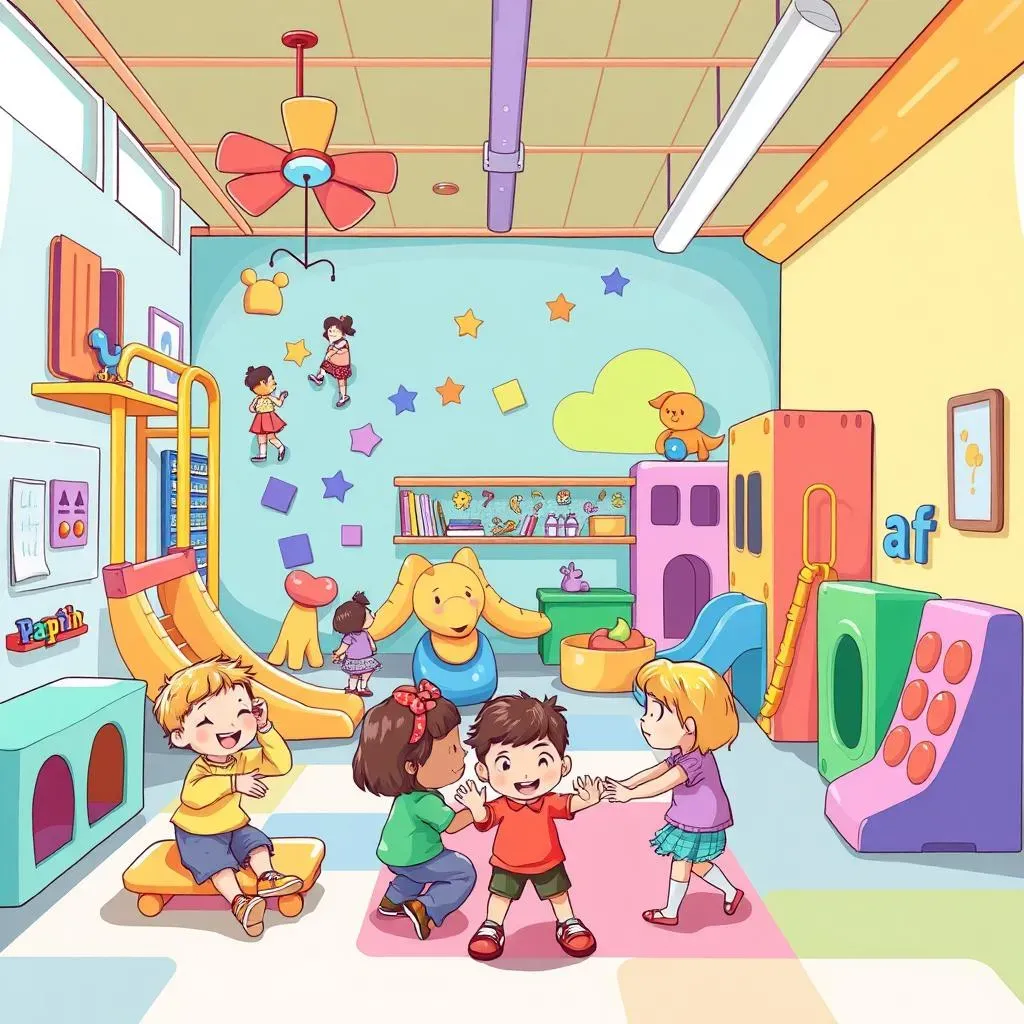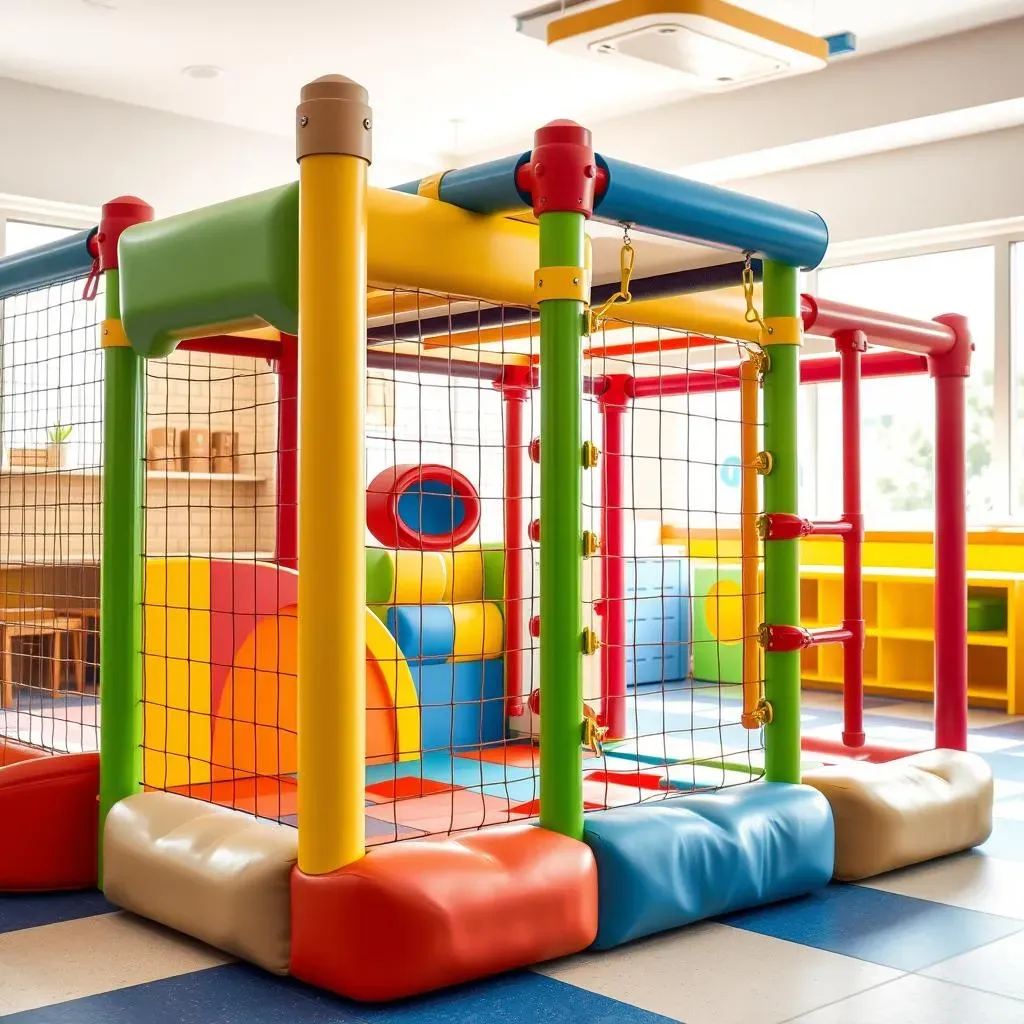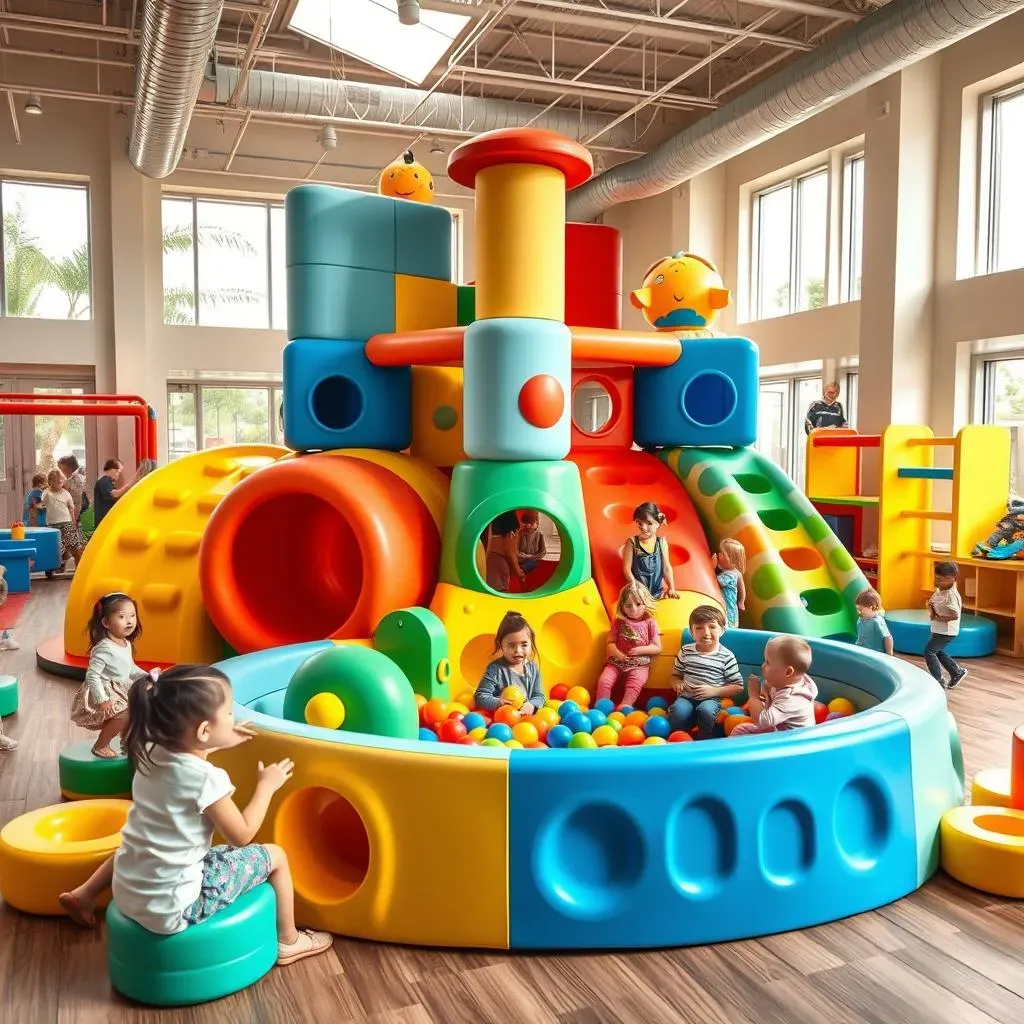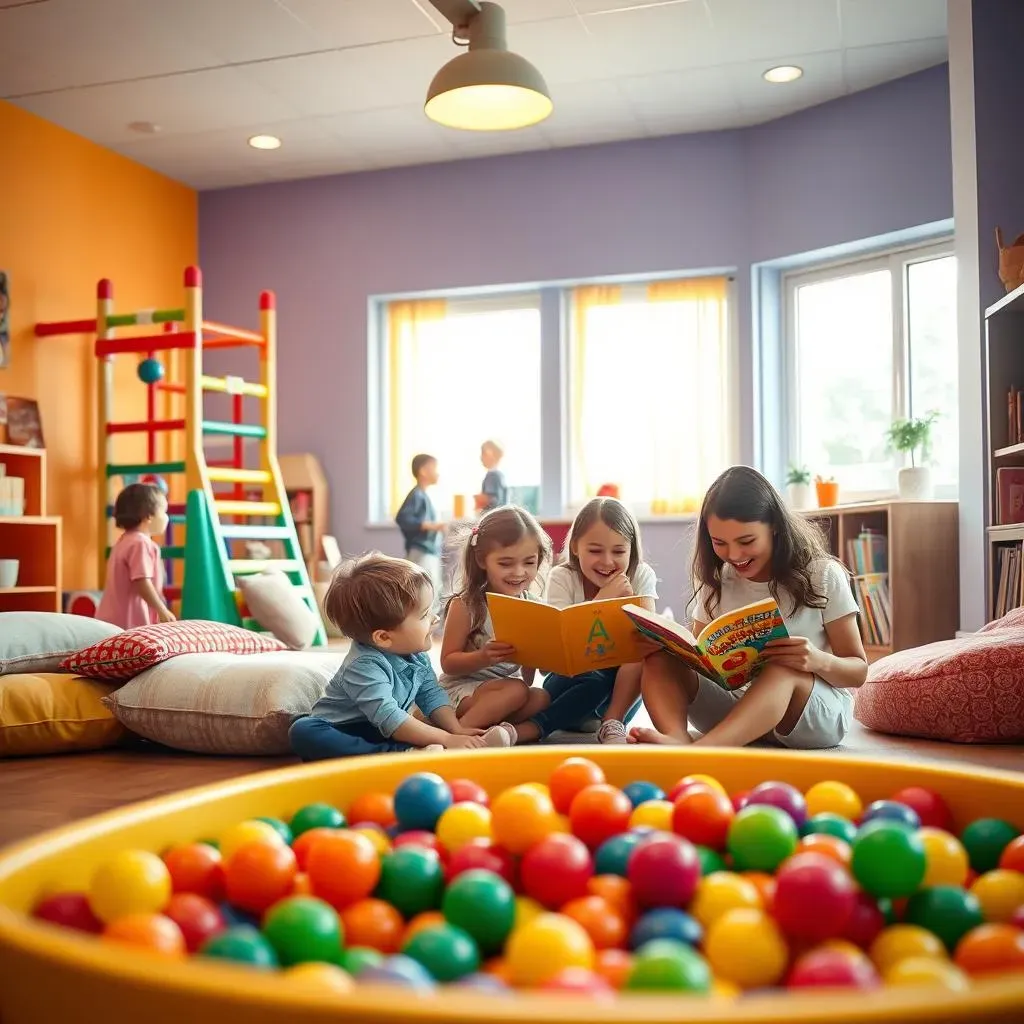Table of Contents
Creating a stimulating and safe environment is paramount when designing a daycare. High-quality daycare indoor play equipment is more than just fun; it's an investment in children's physical, cognitive, and social development. But with so many options available, how do you choose the right equipment and design a space that truly fosters growth and learning? This article dives deep into the world of daycare indoor play areas. We'll explore the essential benefits of incorporating well-designed play structures, covering everything from boosting motor skills to encouraging imaginative play. We'll guide you through the key considerations when selecting equipment, ensuring it aligns with your daycare's specific needs and the age groups you serve. From classic soft play areas and climbing structures to innovative sensory play options, we'll showcase popular types of equipment and how to integrate them effectively. Safety is key, so we'll provide practical tips on designing layouts that minimize risks and maximize engagement. Finally, we'll cover essential maintenance and safety protocols to keep your play area in top condition for years to come. Get ready to transform your daycare into a vibrant hub of activity and learning!
Benefits of Quality Daycare Indoor Play Equipment

Benefits of Quality Daycare Indoor Play Equipment
Physical Development and Motor Skills
Quality daycare indoor play equipment is a powerhouse for physical development. Think about it: climbing structures build strength and coordination, while soft play areas encourage gross motor skills like running, jumping, and rolling. These activities aren't just about burning energy; they're laying the foundation for a lifetime of physical literacy. When kids have ample opportunities to move and explore in a safe, controlled environment, they develop better balance, spatial awareness, and overall body control.
And it's not just the big movements that benefit. Many pieces of indoor play equipment, such as activity panels and manipulative toys, also promote fine motor skills. Grasping, twisting, and manipulating these objects helps children develop the hand-eye coordination and dexterity they'll need for writing, drawing, and other essential tasks. It’s all interconnected!
Cognitive and Social-Emotional Growth
The benefits of indoor play extend far beyond the physical realm. Quality daycare indoor play equipment is a catalyst for cognitive and social-emotional growth. Pretend play areas, for example, encourage children to use their imaginations, develop problem-solving skills, and explore different roles and scenarios. Building a fort, pretending to be a doctor, or creating a make-believe restaurant – these activities all foster creativity and critical thinking.
Furthermore, indoor play provides opportunities for social interaction and cooperation. Children learn to share, take turns, negotiate, and resolve conflicts as they play together. They develop empathy, communication skills, and the ability to work as part of a team. These social-emotional skills are crucial for success in school, relationships, and life in general. So, a well-designed indoor play area isn't just a place to have fun; it's a learning laboratory where children develop the skills they need to thrive.
Benefit | Description | Example |
|---|---|---|
Physical Development | Enhances gross and fine motor skills, coordination, and balance. | Climbing walls, soft play structures, activity panels. |
Cognitive Growth | Stimulates imagination, problem-solving, and critical thinking. | Pretend play areas, building blocks, puzzles. |
Social-Emotional Development | Promotes cooperation, communication, empathy, and conflict resolution. | Group games, shared play structures, role-playing activities. |
Key Considerations When Choosing Indoor Play Structures for Daycares

Key Considerations When Choosing Indoor Play Structures for Daycares
Safety Standards and Compliance
Before you even think about colors or themes, safety has to be your North Star when selecting indoor play structures for daycares. I can't stress this enough! You're responsible for the well-being of dozens of children, and that starts with ensuring your equipment meets or exceeds all relevant safety standards. Look for certifications from recognized organizations like ASTM International or the Consumer Product Safety Commission (CPSC). These certifications indicate that the equipment has been tested and meets specific safety requirements for materials, construction, and design. Don't just take the manufacturer's word for it; do your research and verify the certifications.
Beyond certifications, consider the materials used in the play structures. Are they non-toxic and free of harmful chemicals like lead or phthalates? Are they durable enough to withstand the daily wear and tear of a busy daycare environment? Look for features like padded surfaces, rounded edges, and secure anchor points to minimize the risk of injuries. Regular inspections are also crucial, so make sure the equipment is designed for easy maintenance and inspection. A little extra diligence upfront can save you a lot of headaches (and potential liabilities) down the road.
Age Appropriateness and Developmental Needs
Not all play equipment is created equal, especially when it comes to age appropriateness. What's engaging and challenging for a toddler might be boring or even dangerous for a preschooler, and vice versa. When choosing indoor play structures for daycares, carefully consider the age range of the children you serve and their specific developmental needs. Toddlers, for example, need equipment that helps them develop their gross motor skills, like climbing, crawling, and walking. Soft play areas with gentle slopes and padded surfaces are ideal for this age group.
Preschoolers, on the other hand, are ready for more complex challenges. They might enjoy climbing structures with multiple levels, slides, and interactive elements. They also benefit from equipment that encourages imaginative play, like pretend play areas or building blocks. Remember to choose equipment that is both challenging and achievable for each age group. You want to stimulate their development without frustrating or overwhelming them. Also, consider the number of children who will be using the equipment at once. Overcrowding can lead to accidents and conflicts, so make sure you have enough space and equipment to accommodate everyone comfortably.
Popular Types of Daycare Indoor Play Equipment

Popular Types of Daycare Indoor Play Equipment
Soft Play Areas: Safe and Engaging Fun
When it comes to popular types of daycare indoor play equipment, soft play areas are always a hit. These are those colorful, padded structures that kids can climb on, crawl through, and slide down without any major bumps or bruises. Think of them as giant, squishy playgrounds! They're perfect for toddlers and preschoolers who are still developing their motor skills and need a safe space to explore. Soft play areas often include features like ball pits, tunnels, and foam shapes, which add to the sensory experience and keep kids engaged for hours. Plus, they're relatively easy to clean and maintain, which is a huge bonus for busy daycare providers.
But soft play isn't just about fun and games. It's also a great way to promote physical activity and social interaction. Kids can burn off energy, develop their coordination, and learn to play together in a safe and supportive environment. Many soft play areas are designed with different levels of challenge, so kids can gradually progress as their skills improve. And because they're so versatile, soft play areas can be customized to fit any space and budget. It's a win-win for everyone!
Climbing Structures: Building Strength and Confidence
For older preschoolers and school-aged children, climbing structures are a fantastic addition to any daycare indoor play area. These structures can range from simple climbing walls to elaborate multi-level systems with ropes, ladders, and platforms. They're designed to challenge kids physically and mentally, helping them develop strength, coordination, and problem-solving skills. Climbing structures also provide a great opportunity for kids to build confidence and overcome their fears. There's nothing quite like the feeling of reaching the top of a climbing wall and looking down at the world below!
Of course, safety is paramount when it comes to climbing structures. Make sure the equipment is properly installed and maintained, and that there's adequate padding underneath to cushion any falls. It's also important to supervise children closely while they're using the climbing structure and to teach them proper climbing techniques. With the right precautions, climbing structures can be a safe and rewarding way for kids to challenge themselves and develop new skills. Plus, they're just plain fun!
Equipment Type | Description | Age Range | Benefits |
|---|---|---|---|
Soft Play Areas | Padded structures with tunnels, ball pits, and foam shapes. | Toddlers and Preschoolers | Promotes gross motor skills, sensory exploration, and social interaction. |
Climbing Structures | Climbing walls, ropes, ladders, and platforms. | Preschoolers and School-Aged Children | Develops strength, coordination, problem-solving skills, and confidence. |
Sensory Play Equipment | Sand and water tables, light tables, and textured surfaces. | All Ages | Stimulates senses, encourages exploration, and promotes cognitive development. |
Designing Safe and Stimulating Indoor Play Areas

Designing Safe and Stimulating Indoor Play Areas
Optimizing Space and Layout for Maximum Engagement
so you've got the equipment picked out, but how do you arrange it all to create a truly engaging and safe space? That's where smart design comes in. When designing safe and stimulating indoor play areas, think about traffic flow. You want kids to be able to move freely from one activity to another without bumping into each other or creating bottlenecks. Create clear pathways and avoid overcrowding specific areas. Consider zoning different areas for different types of play – a quiet corner for reading, an active zone for climbing, and a creative space for arts and crafts. This helps to minimize distractions and allows children to focus on the activity at hand.
Also, pay attention to sightlines. You want to be able to supervise children from anywhere in the room, so avoid placing tall structures that block your view. Mirrors can also be a great way to expand your field of vision and create a sense of openness. And don't forget about lighting! Natural light is always best, but if that's not an option, make sure you have adequate artificial lighting that is bright and evenly distributed. A well-lit space is not only safer but also more inviting and stimulating for children.
Design Element | Considerations | Benefits |
|---|---|---|
Traffic Flow | Create clear pathways, avoid overcrowding. | Reduces accidents and promotes smooth movement. |
Zoning | Designate areas for different types of play. | Minimizes distractions and encourages focused engagement. |
Sightlines | Ensure clear visibility of all areas. | Facilitates supervision and enhances safety. |
Lighting | Maximize natural light or use bright, even artificial lighting. | Creates a safer, more inviting, and stimulating environment. |
Incorporating Sensory Elements and Natural Light
Let's talk sensory experiences! A truly stimulating play area engages all the senses – sight, sound, touch, smell, and even taste (in a safe and controlled way, of course!). Think about incorporating elements like textured surfaces, sound-making toys, and even aromatherapy diffusers (using child-safe essential oils, of course). Sand and water tables are always a hit, as are light tables and sensory bins filled with different materials like beans, rice, or pasta. These sensory experiences not only stimulate children's brains but also help them develop their fine motor skills and explore the world around them.
Natural light is another key element of a stimulating play area. Studies have shown that natural light can improve mood, increase focus, and even boost the immune system. If you have access to windows, make sure they're not blocked by furniture or equipment. You can also use sheer curtains to diffuse the light and create a softer, more inviting atmosphere. If natural light is limited, consider using full-spectrum light bulbs, which mimic the properties of natural light. The goal is to create a space that is both visually appealing and conducive to learning and play.
Maintenance and Safety Tips for Daycare Indoor Play Equipment

Maintenance and Safety Tips for Daycare Indoor Play Equipment
Regular Inspections and Cleaning Protocols
so you've got this amazing indoor play area, right? But it’s not a "set it and forget it" situation. Regular maintenance is absolutely key when it comes to maintenance and safety tips for daycare indoor play equipment. We're talking about daily, weekly, and monthly inspections. Daily, check for any obvious hazards like loose screws, torn padding, or broken pieces. Weekly, do a more thorough inspection, paying close attention to high-traffic areas and equipment that gets a lot of use. Monthly, take everything apart (as much as you can) and give it a deep clean. This isn't just about aesthetics; it's about preventing the spread of germs and keeping kids healthy. Use non-toxic cleaning products and follow the manufacturer's instructions carefully. A clean play area is a safe play area!
And speaking of cleaning, let's talk protocols. Establish a clear cleaning schedule and assign responsibilities to specific staff members. Make sure everyone is trained on proper cleaning techniques and knows what to look for during inspections. Keep a log of all inspections and maintenance activities, so you can track any recurring issues and address them promptly. Consider posting a checklist near the play area as a reminder for staff. Remember, consistency is key! The more diligent you are about maintenance, the longer your equipment will last and the safer your play area will be.
Task | Frequency | Details |
|---|---|---|
Visual Inspection | Daily | Check for loose parts, tears, and obvious hazards. |
Detailed Inspection | Weekly | Examine high-stress areas and moving parts. |
Deep Cleaning | Monthly | Disinfect surfaces and check structural integrity. |
Addressing Wear and Tear and Potential Hazards
Even with the best maintenance, wear and tear is inevitable. Kids are tough on equipment! That's why it's so important to be proactive about addressing any potential hazards. As part of your regular inspections, look for signs of wear and tear like frayed ropes, cracked plastic, or worn padding. Don't wait until something breaks completely to fix it. Small problems can quickly turn into big problems if they're not addressed promptly. Have a system in place for reporting and repairing damaged equipment. This could involve a simple form that staff can fill out or a designated person who is responsible for making repairs. The important thing is to have a clear process and to act quickly when issues arise.
Also, be aware of potential hazards that might not be immediately obvious. For example, make sure there are no sharp edges or protruding hardware that could cause injuries. Check the height of climbing structures to ensure they're appropriate for the age group using them. Be mindful of tripping hazards like loose rugs or uneven surfaces. And don't forget about the environment around the play equipment. Keep the area free of clutter and debris, and make sure there's adequate lighting. A little bit of foresight can go a long way in preventing accidents and keeping kids safe.
Conclusion: Investing in Play, Investing in the Future
Choosing the right daycare indoor play equipment is a crucial decision that impacts children's development and the overall success of your daycare. By carefully considering the benefits, key considerations, popular equipment types, safety aspects, and maintenance needs, you can create a stimulating and secure environment where children thrive. Remember, play is not just fun; it's a fundamental part of learning and growth. Investing in high-quality indoor play equipment is an investment in the future of the children in your care.